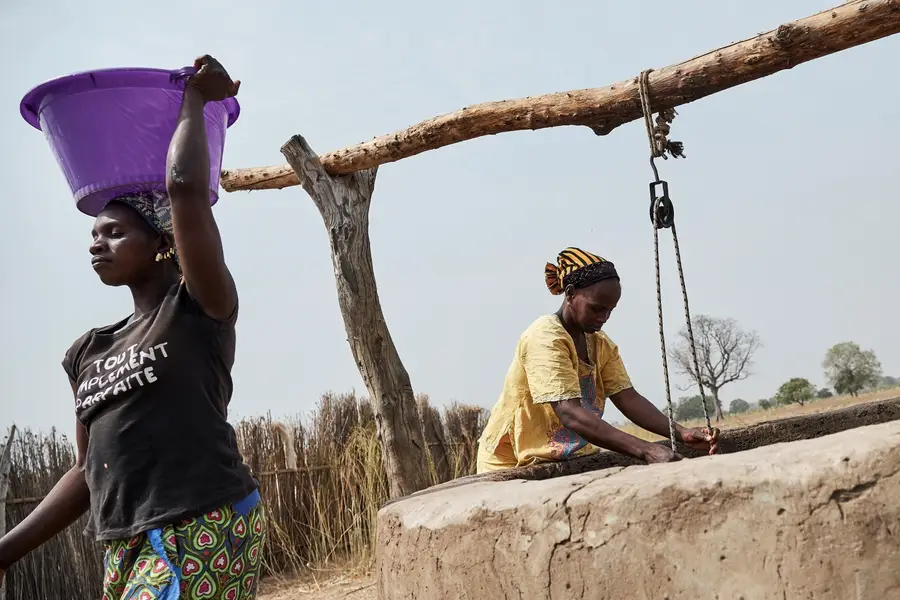
Photo credit: Xaume Olleros for RTI International.
Good governance and strong institutions are the foundation of democratic, prosperous, and stable societies. By integrating good governance across sectors, development practitioners can foster localization, increase impact, and enhance the sustainability of results. In other words, they can help democracies deliver for their citizens.
RTI uses an integrated governance approach, informed by evidence and experience, to help development programs across sectors realize these benefits. In this post, we explore the topic of integrated governance with expert Jean-Michel Dufils, who recently served as the Chief of Party for an RTI-led, USAID-funded integrated governance project in Senegal that ran from 2016-2023.
What is integrated governance?
Governance combines elements of accountability, transparency, participation, equity, and efficiency. Integrated governance refers to the intentional embedding of democracy, human rights, and governance (DRG) principles and practices across sectors with the goal of contributing to systemic governance improvements and better service delivery for citizens. This approach recognizes that governance is core to the success of development activities across all sectors and serves as a catalyst for cross-sectoral results.
It entails integration across three areas:
- Across sectors: it breaks down silos and brings sectors together to realize synergies
- Across frameworks: it harmonizes national and local development priorities and policy frameworks
- Across levels: it addresses national and regional factors that affect the sustainability of development programs
In our experience, integrated governance has meant incorporating governance approaches like civil society engagement, citizen advocacy, and government accountability into sectoral development programs to drive collaboration and support local and national governments to improve social service delivery for citizens in areas like health, education, water, sanitation, and nutrition.
Why is integrated governance needed?
While development problems are multi-faceted, responses are often siloed into single sector programs that do not address the complexity of these issues. These programs rarely talk to each other, and this lack of collaboration hinders results and sustainability. Integrated governance helps bridge this gap by facilitating collaboration across sectoral programs. The evidence to date is that this approach has a significant positive and lasting impact. For example in Senegal, our research found that an integrated governance approach resulted in improved health service readiness and delivery.
How does integrated governance foster citizen engagement for better services?
Citizen engagement is in the DNA of integrated governance. Without active citizen involvement, social services rarely improve. Governance programs foster formalized ways for citizens to be an active participant in shaping these services by helping build knowledge and awareness of rights and responsibilities, helping governments create opportunities for citizens to bring their priorities and concerns to them, and helping citizens take a proactive role in holding authorities accountable for delivering on their priorities.
When governance programs team up with sectoral programs and government counterparts to improve services, they create positive cycles whereby citizens participate in processes like budgeting and planning, see the positive impact of their involvement, and increase their trust in their government’s ability to deliver. In Uganda, RTI led implementation of a USAID and UKaid program that helped national and local governments respond to citizen demands for more democratic governance. This resulted in more efficient local government systems, greater adherence to transparency and accountability legislation, and cost savings in service delivery projects. Citizen and civil society advocacy led authorities to invest in service improvements like upgrading health facilities, building new classrooms, and improving garbage collection.
How does localization align with integrated governance programming?
From my experience, localization is at the heart of integrated governance. Integrated governance puts local stakeholders in the driver’s seat and builds their capacity to lead development in their communities and countries. Implementers like RTI bring tools, knowledge, and approaches that we transfer to local actors to implement. In doing so, we strengthen local systems, capacity, and sustainability. For example, in Nigeria, we led a USAID project that focused on empowering local authorities and civil society leaders to collaborate with citizens to solve social services issues, which helped 600,000 Nigerians gain access to clean drinking water, among other results.
We’re intentional about learning from the programs we implement to better understand localization and how to promote it. What we learned through the Senegal project was that co-location and joint work planning helped realize synergies between various USAID governance and sectoral programs. This even involved the sharing of space and costs and encouraged a team spirit among staff and across projects. This had the terrific benefit of enabling more coherent interactions with local stakeholders across development projects.
How do public financial management systems contribute to integrated governance?
Public financial management (PFM) is an essential part of integrated governance as it provides the resources to implement plans and improve social services. In the countries where RTI works, public resources are very limited, in part because PFM systems are not efficient and they lack transparency; as a result, they’re vulnerable to corruption and mismanagement.
Improving these systems can ensure resources go to their intended development purpose and align with citizen priorities. In Senegal, we helped the tax administration and Ministry of Finance review its systems, which were outdated and obsolete, and reform them. With a new digital system for collecting taxes, local authorities and citizens could access real-time, transparent data about how many taxes were being collected and where their money was going. This built trust and confidence between citizens and their governments, which resulted in an 80-500% increase in taxes collected across targeted municipalities, which were then invested in improving health, education, water, and sanitation services. Efficient PFM systems can also build national governments’ confidence in their local counterparts, thereby unlocking more central funding for local development priorities.
Acknowledgment: Jennifer Cupp, Communications Consultant, contributed to this blog.

